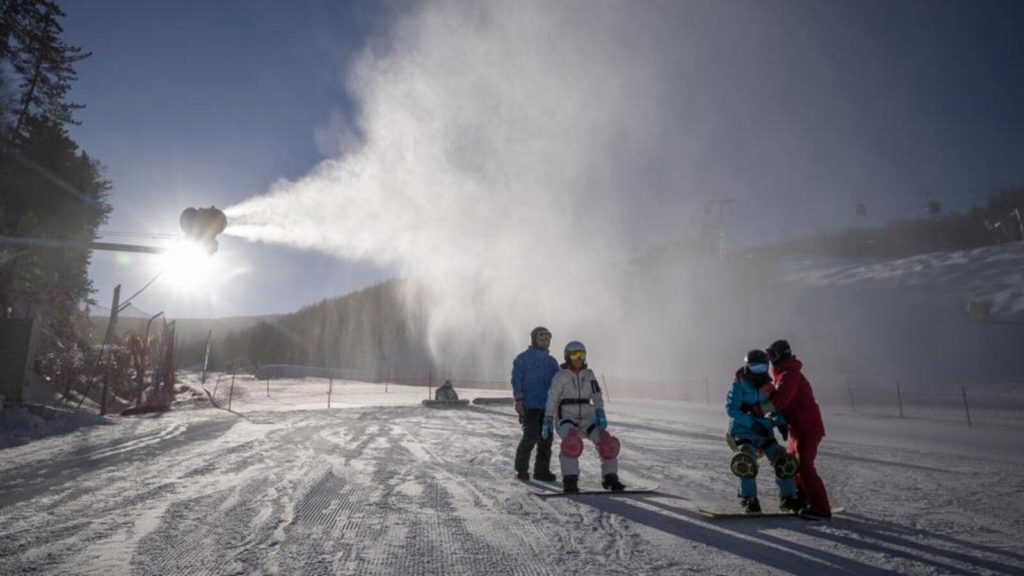With the 2022 Beijing Winter Olympics fast approaching, in about a week’s time, many of the 354 snowmaking machines deployed across the three clusters of venues will be gradually switched off.
{{^userSubscribed}}
{{/userSubscribed}}
“We are still making (snow), but only topping up at certain spots. It’s pretty much done,” said Austrian engineer Manuel Schoepf, an expert at Italian company TechnoAlpin.
What’s been done for the Games is “crazy”, Schoepf, who is among a handful of foreign experts helping China to make snow for the event, told HT in Yanqing, a Beijing suburb, late December.
More than five million cubic metres of snow have been made for the Games in the last few months across three venue , said Schoepf, who has also worked for the last two Games in South Korea’s Pyeongchang and Russia’s Sochi.
The venues for the Beijing Winter Games have been divided into three zones, or clusters: Beijing, Yanqing – a hilly, suburban district in the capital, and Zhangjiakou in the neighbouring Hebei province.
{{^userSubscribed}}
{{/userSubscribed}}
At least seven of the snowmaking machines have been deployed in Beijing.
Making snow, however, is not unique to the Beijing Games, which will run from February 4 to February 20 followed by the Paralympics from March 4 to March 13.
Artificial snow has been used to varying degrees since the 1980 Winter Olympics in Lake Placid, New York. In Sochi, for example, which has a subtropical climate with a long, cold winter, snow was made and stored in piles inside insulated storage facilities.
Schoepf said for Winter Olympics, snow of a different consistency is needed – it needs to be hard.
“With natural snow, it’s just too soft and too dry,” he said.
“So here is it is too dry for us, actually. We have to make purposely wet snow so that it sticks, and also so that it freezes to the ground, because the ground actually doesn’t freeze here. Because there’s no moisture in the ground, it can’t freeze,” he said.
{{^userSubscribed}}
{{/userSubscribed}}
“What we did here, for example, in Yanqing, is that we covered all those access roads from the top down…first to make sure we don’t get the dust problem on the slopes,” Schoepf says, explaining that dust getting on the snow was a major problem for them.
The essentials to manufacture snow are water and compressed air, which are mixed and then sprayed through hi-tech nozzles, called “nucleation nozzles”.
Several factors like the nozzle configurations, temperature and humidity play critical roles in manufacturing snow.
At government-organised media tour in December, Jia Maoting, general manager of Olympic Sports Construction Development Company agreed about the need to make snow for snow sports at the Olympics level.
“The natural hardness of snow cannot meet the requirements for major Winter Olympics competitions. Therefore, the venues have artificial snow with higher hardness. The two major stadiums, the National Ski Jumping Centre and the National Cross-Country Ski Centre (in Chongli district of Zhangjiakou), require a total of about 250,000 cubic metres of water to meet snowmaking needs,” Jia told reporters.
{{^userSubscribed}}
{{/userSubscribed}}
Making snow from water is divided into four categories, namely reservoir diversion, rainwater recovery, surface runoff, and melting, Jia said, adding that the organisers are using water cautiously, and ensuring that there is no damage to groundwater levels.
“We are not mining (the water), and will not cause damage to the groundwater,” he said.
Jia, asked about water waster in an area that is arid, said that as for the snow water that melted this year, all the snow water will be collected, and will continue to be recycled next year, without a drop being wasted.
